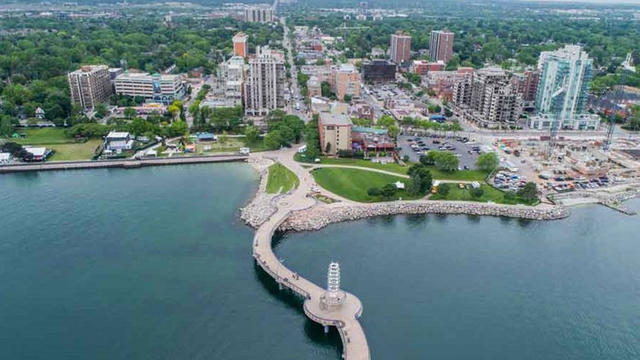Population in Burlington, Oakville, Milton and Halton Hills to grow by 1.1 million
Published May 14, 2021 at 2:36 am

With over 1.1 million people expected to move into Burlington, Milton, Oakville and Halton Hills between 2031 and 2051, now is the time to plan for their arrival.
How they can properly accommodate them into the Halton Region is a discussion that is only beginning now, but one that Burlington Mayor Marianne Meed Ward knows is of the utmost importance .
“We’ve met and far surpassed our growth targets already, we did that a decade early,” the Burlington mayor told Insauga’s Khaled Iwamura. “But now the region has to accommodate an additional 1.1 million between 2031 and 2051, which sounds like a long way off, but it will be here before you know it.
“We are going through a regional official plan review, because that 1.1 million people and jobs has to be divvied up among the four municipalities.”
Ward said some five options were discussed by herself and the six regional councillors during Tuesday night’s meeting that range from one extreme of no expansion into greenbelt farmlands to accommodate employment or residential to the other extreme of a couple of thousand acres expanding into the greenbelt.
That kind of expansion, would it pass, Ward says would mostly happen in Milton and Halton Hills.
“Burlington is built out, so the scenario is the options don’t affect us in terms of our built boundary, which is defined and we are not changing our built boundaries in Burlington at all,” she said. “But if there’s less growth say in Milton or Halton Hills, then Burlington will have to take more a share of population and employment growth in our built up area.”
Depending on the range of the different scenarios and which one is selected, Burlington will likely have to absorb another 45,000 to 60,000 new people and jobs.
“Most of that will be around our three Go Stations, so that’s where we want to see the bulk of new intensification, community facilities, commercial retail jobs, community amenities, parks and all of that stuff,” Ward said.
The City of Burlington and council is also separately embarking Monday on a review of Major Transit Station Areas (MTSA’s).
Work on that was started back in 2016-17 to try and cast a vision for what can be accommodated and, depending on what the built form is, what the intensification levels are. Some 25,000 to 30,000 people and jobs can be accommodated at each Go station.
A question Ward has heard recently and on the call for Tuesday’s meeting was, depending on the selected option, how do they divvy up and assign growth to Burlington and what does it mean for the established neighbourhoods.
“Essentially in established neighbourhoods there would be very little growth,” the Burlington mayor said. “There might be some secondary suites or some semis (homes) instead of single families, but we’re not going to see major intensification.”
That major intensification will be along the Go line and those primary areas, Ward explained. There are some secondary areas for growth and those are at plazas, retail, strip malls and big malls.
She explains there is plenty of area for jobs and intensification in those places because they’re single-story buildings for the most part with lots of parking.
“Whichever option is picked, we know we can accommodate it in those primary and secondary growth areas, which leave our established neighbourhoods alone. Which is good,” Ward said.
While she heard the extremes being expressed on both sides, the one thing Ward heard over and over was Burlington and the rest of Halton needs to hang on to their farmlands.
“That’s one of the things that came through loud and clear on the call yesterday from residents who say we’re not really excited about expansion of residential and commercial into greenbelt because that’s farmland, that’s open space right now,” she said. “It’ll be an interesting discussion.”
Ward hopes more residents will participate at both the regional levels.
“The initial vote will be there where to assign all the growth among the four municipalities,” she said. “Then our work will continue to, ‘OK, how do we absorb that and how do we plan to make sure that these new areas of growth – significant growth – are complete communities.
“Not just high rises with a dry cleaner at the bottom. We want amenities, we want parks, we want community centres, so I really hope that people participate in that. It’s an interesting time in Burlington’s history planning for that next wave.”
insauga's Editorial Standards and Policies advertising





